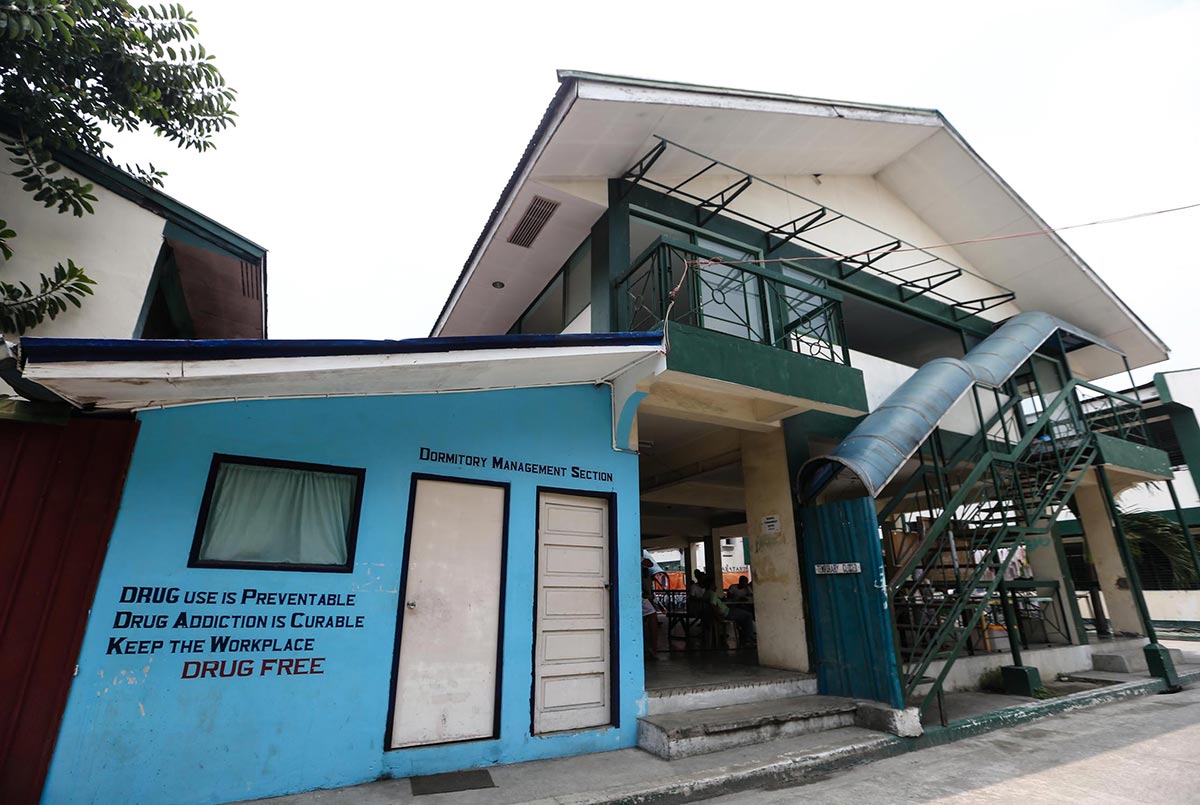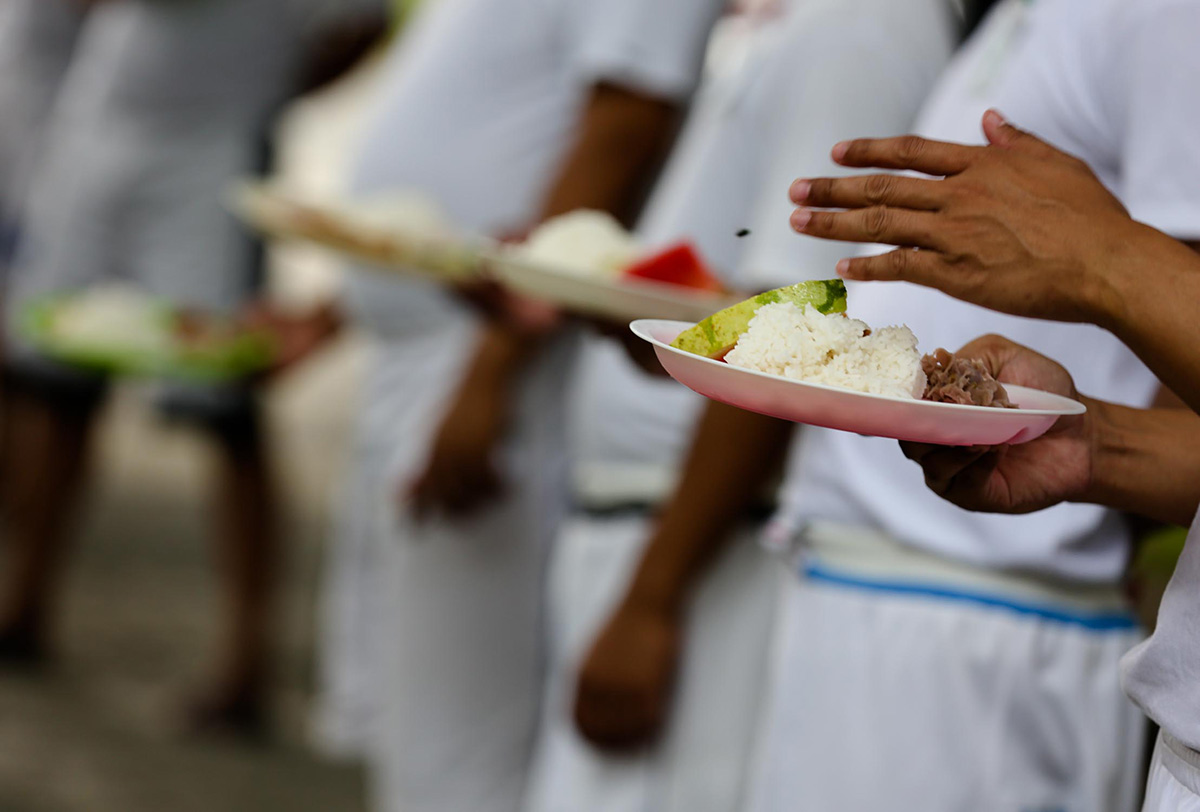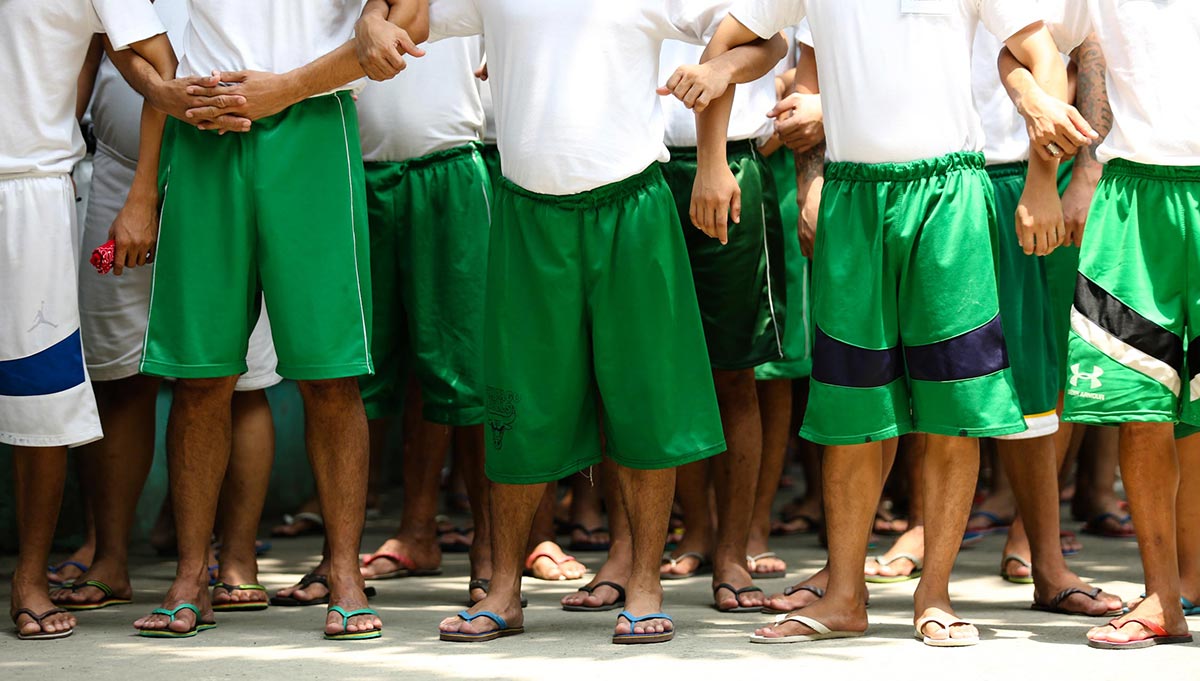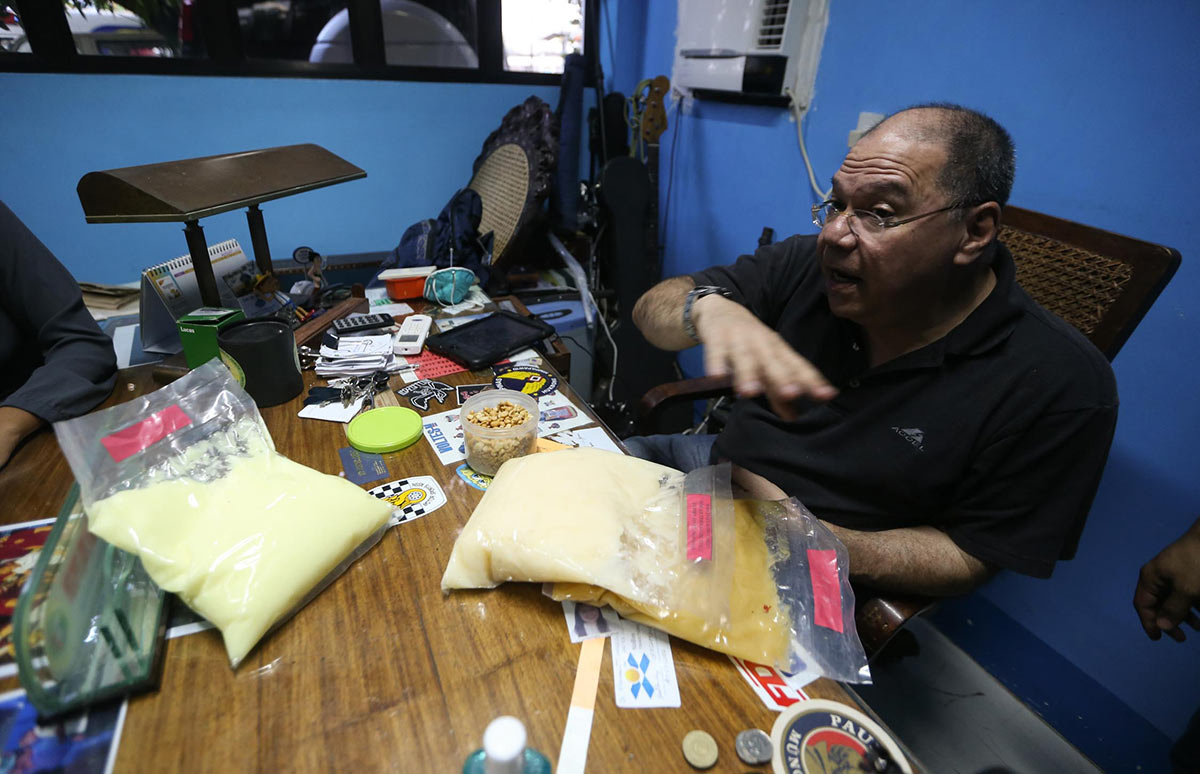The story of priest, lawyers, army members, pushers, ex-convicts, children, women locked up in rehabilitation centers, or in their own homes waiting for treatment services to come, show us that it is redemption not execution; reformation not exclusion that drug dependents need.
The Department of Health-Treatment and Rehabilitation Center (DOH-TRC) in Bicutan, Taguig City, was once neglected adequate funding by the government. But today it has become top of mind when experts and local governments talk about rehabilitation for some 600,000 drug surrenderers in the administration’s all-out war on drugs.
Today, the problem of how to accommodate such a large number of people is more a priority than ever.
The largest government-owned rehabilitation facility ideally accommodates only 500 patients. However, the place is now crowded with 1,500 persons and can no longer accept any more–even as throngs of drug dependents continue to pour in.
Bicutan, as it is commonly referred to, has five dormitories for male adults, one for boys and junior adults, and one dormitory for around 130 women—all classified as either regular and heavy drug users. Most of its patients come from Taguig, Pasay, Manila and Cavite.
READ: DOH cites severe lack of rehab centers during Senate hearing
At the ward for adult males, majority come from detention cells. “Bert,” 41, is one of them.
The ex-convict has killed at least five people, and robbed countless victims before while he and his partner roamed the streets on board a motorcycle. Their modus? Steal money from people withdrawing at ATM stalls. Their goal? Have enough funds to consume more drugs–usually “shabu”–after every heist.
At one point, Bert said he sniffed drugs seven times a day.
“Ang sarap kasi, eh. Lalo pag first time mo. Parang lahat kaya mo; parang di ka pagod (It feels so good, especially if it’s first time. It feels like you’re invincible, and you don’t get tired,” he said.
Bert started taking illegal drugs at age 17, and was imprisoned at 21 for violation of the anti-illegal drugs law.
“Literally, I was hopping from one detention cell to another since I was 21,” he said. “It was my way of life.”
After his sentence at National Bilibid Prison in Muntinlupa, he was charged again for drug use and imprisoned after he was caught positive for drugs in a raid in Caloocan City. He was transferred to Bicutan soon after–and has not left since.

On the morning the Inquirer visited the DOH-TRC in Bicutan, Bert was in all white as he led a platoon of men in white shirts and green shorts on the way to the canteen. His current task was to guide and motivate other residents in the rehabilitation center, men as notorious and addicted to drugs as he once was.
Bert said that before coming to Bicutan, he did not expect he could change. But inside the facility, which he now regards as home, everyone is compelled to listen and obey.
“In the prison system, there is no change. Because it’s where all the bad things are: drugs, beer, violence and gambling,” he said. “The rehab center taught me goodness. In here, they will not hurt you, or treat you violently. I’m bad but their kindness crashed my heart.”
“Believe it or not,” he added, “I know I changed here.”
Bert was looking forward to seeing his 17-year-old daughter in Romblon after his release. “She’s my reason for living,” he said. “I could have been dead like my peers now without the rehab. I can’t say I’m totally changed; but I am sure I can now manage.”

Bicutan is also a facility that treats other forms of addiction.
Undergoing treatment with Bert for alcoholism is “Brother Joey,” 37, a deacon from the Archdiocese of Manila and an alcoholic, is also a patient at the rehabilitation facility. Two months after the Inquirer’s visit, Brother Joey, who identified himself as a deacon from the Archdiocese of Manila, was set to be ordained a priest.
In the past, Brother Joey consumed a bottle of wine and beer to sleep every night. He became an alcoholic after a bout of depression due to his mother’s Alzheimer’s. When alone, Brother Joey often contemplated on life and solitude, his mission and purpose.
Brother Joey said he needed a controlled environment to stop the addiction. “God’s call for change” was how he put his decision to voluntarily confine himself in Bicutan.
His plan was to keep himself anonymous while he followed the process of healing at Bicutan. But his secret was bared earlier than anticipated after a fellow patient identified him.
When the Inquirer interviewed him, a holy cross was scrawled on his identification card. Two months from now, Brother Joey told the Inquirer proudly, he was going to be ordained a priest.
His case was, unfortunately, not uncommon. According to Brother Joey, six other priests before him had undergone the same rehabilitation treatment. They were now fully treated and assigned in different parishes.
Addiction, as they say, never chooses its prey.
Bicutan, located in Camp Bagong Diwa in Taguig, was once run by police. It used to have holding areas for patients who were punished and reprimanded–until the administration was turned over to the DOH.
Alfonso A. Villaroman, Bicutan’s chief health officer, recalled how there used to be a lot of shouting and fighting inside the treatment and rehabilitation facility.
“The patients here are angry,” he said. “Anger is a combination of fear and pain. They were rejected. They were hurt. And now, what we do here is to give them the opposite. Love.”
“You don’t treat a violent by being violent. You don’t help them by adding fuel to the fire. This is not a place for violence,” he added.
Addiction is a disease of the family. Half of the battle is lost if don’t work on the family.
“We have to fit the program to the patients’ need. It’s not putting them in a place and waiting for 6 months and leaving everything up to God. You help them have a form of insight. Develop a thinking there’s hope for them. Cause many of the patients, if you look at their eyes, they tell you, they’ve given up on everything. The challenge is go back to their feet: To build again their self-esteem, their shattered egos. This is what our job is.”
Bicutan, meanwhile, have a success rate of 70 percent, says Villaroman. “The secret is to make recovery fun. Don’t make their stay miserable. Don’t be judgmental,” he said.
Of Bicutan’s 1,500 residents, around 68 patients are diagnosed with mental disorders, including 14 people with schizophrenia, psychosis, substance-induced depression and bipolar disorder. Some patients who previously came from prison carried infectious diseases and had to be monitored closely.
As of the Inquirer’s visit in September, there were around 65 patients with tuberculosis, said Villaroman, who added that there was no discrimination against HIV patients. Because of overpopulation, one of the most common diseases of patients in Bicutan are skin diseases like scabies. Hence, residents are made to take a bath at least twice a day. Patients with skin diseases are give sachets of sulfur ointment for eczema, kurikong and allergy,and antibiotics.
“Ligo (Bath) galore ang mga patients in Bicutan,” Villaroman said. “They should be comfortable. Remember, a rehab center is not a jail. It’s a place of healing. Its illogical if you place them in a place of healing, and there’s no healing.”
But while residents are made to be comfortable, rules are strictly enforced at Bicutan. Before eating, patients follow a leader to line up in groups. Each one wears a white shirt and color-coded shorts depending on his position and length of stay. Newcomers are assigned green shorts and platoon leaders, those who are about to leave the facility, are assigned white.
Metal spoons and forks are not allowed inside the facility. They have to use plastic utensils or their hands when eating. Their daily food budget is a mere P117.
Eleizer Lagajino Jr., one of the center’s six dieticians, said Bicutan’s staff was trying its best to make do with the limited food budget.
A regular helping, prepared by the center’s 20 cooks, consists of vegetables and a viand, a cup of rice and dessert. And fruits, of course. Patients are limited to only cup of rice, but they can always go to the cooperative and buy more, if they have the money. The center also provides them a refrigerator where they can keep food given by their visitors.
“[Our budget is] very low,” Lagajino said. “It would be better if we could increase it to P150.”

Bicutan’s patients are each allotted a bed in one of its dormitories. Each dormitory has its own restroom surrounded by gates. At night, however, patients cannot access the restrooms to ensure that no one will not escape. Instead, a separate urinal is situated in a different area of the dormitory.
All patients have their own “stool box,” or little drawers that they pull out to cover the urinal. For those who need to defecate, they used the plastic bags given to them daily for their stool. They throw it in the garbage afterward.
But don’t think the facility isn’t clean. Patients and staff work hard to keep everything clean at all times. Patients take a bath at least twice a day to feel fresher and cleaner due to overpopulation. Bicutan, ideally, can accommodate only 500. But with 1,550 patients living in the facility, common illnesses and diseases like scabies, eczema and tuberculosis are more easily acquired and transmitted.
"Ligo (Bath) galore ang mga patients sa Bicutan,” Bert recounted. “They should be comfortable. Remember, a rehab center is not a jail. It's a place of healing," Bert said. “Ang puti ko na ngayon. Nang pumasok ako ang itim itim ko (I am fairer now. When I first came in, my skin was very dark). I don’t want to be under the sun again.”

Every patient is given a detoxification treatment to address the withdrawal tendencies. Bicutan’s patients, all of whom experience withdrawal, are detoxified through a daily dose of Vitamin B complex and ascorbic acid.
“When you have withdrawal… there’s Amphetamine crush. The same high you get is the same low, you’ll go down. The women are most pitiful. They sell their body to support their severe craving,” Villaroman said.
“Detoxification removes toxins. We address health issues inside the facility. If they have TB, we cure them,” he added.
Along with food, shelter and medication, Bicutan also has in-house nurses and other health specialists to treat patients. There are around 30 nurses in Bicutan attending to the medical needs of the patients, according to head nurse Norman Torres. Nurses take daily the blood pressure of at least 300 patients who need close monitoring. In a day, around 30 to 40 patients undergo a full checkup.
“It’s tiring, yes, my arms hurt; but it’s fulfilling,” Torres said. “It saddens me sometimes, however, whenever we learn about patients who relapsed again into drug addiction [after treatment].”
Psychologists are also in-house in Bicutan. However, according to chief health officer Villaroman, the ratio of patients to psychologists is a large 1:150.
By Villaroman’s estimation, Bicutan needs 54 more psychologists to cater to the rising demand.
“We need to address staff burnout,” he said. “Talagang kulang kami. We ask assistance and additional budget. But the DOH gives only as much as it can.”

READ: Rehab or Rubout Part 2
According to the DOH, the relapse rate for drug addicts in the Philippines is around 20 percent. The figure changes depending on the success of patients’ aftercare programs.
After the rehab and the after-care program, patients are expected to be sober. But there is no certainty yet that they will not relapse. They return to their addiction, go back to rehab or die.
Two of Bicutan’s patients who skipped the aftercare program later relapsed. Soon after, they wound up dead, casualties of the Duterte administration’s all-out-war on drugs.READ: The Kill List
Drug addiction is an everyday battle. It is, at the end of the day, a community effort, with several factors coming into play.
The world inside rehabilitation facilities could be safe, its walls marked with daily reminders of good deeds and values where people are true and where people care for you. But what happens once the treatment is done is always another story.
For Brother Joey and Bert, their Bicutan experience is just one more stepping toward full recovery.
But one question still remains for those like them: Should they even recover, will the country ever welcome back the very kind of people their President wishes dead?
READ: Rehab or Rubout Part 1
READ: Rehab or Rubout Part 2
READ: Rehab or Rubout Part 3
Note: Three months after President Duterte first announced his all-out war on drugs, former and current drug dependents are faced with only two choices: be rubbed out by either police or vigilantes, or be rehabilitated by centers and doctors ill-prepared to cater to the overwhelming influx of drug surrenderers. The Inquirer shines a light on the latter choice in a four-part special report running from Oct. 6 to 10.